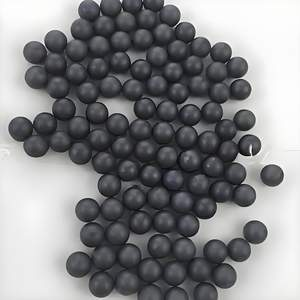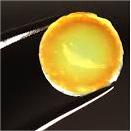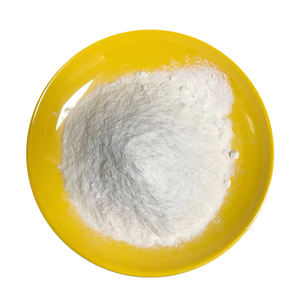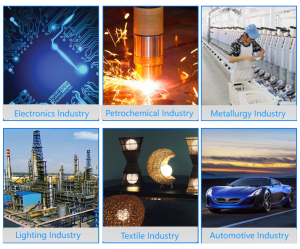Professional industry ceramic supplier, silicon nitride, silicon carbide, aluminum nitride and any other kinds of ceramics.
1. Introduction
Just 24 hours ago, a major materials science conference in Germany highlighted breakthroughs in high-purity silicon carbide (SiC) manufacturing—specifically its use in next-gen crucibles for molten metal processing and semiconductor crystal growth. This renewed focus underscores why understanding the nuances between silicon carbide crucibles and other advanced ceramic options is more critical than ever.

Silicon carbide crucibles are prized for their extreme thermal shock resistance and durability at temperatures exceeding 1600°C. But how do they really stack up against alumina, zirconia, or even silicon nitride alternatives? Let’s break it down.
2. Material Composition and Structural Integrity
2.1 Silicon Carbide vs. Alumina (Al₂O₃)
Silicon carbide crucibles outperform traditional alumina crucibles in thermal conductivity—up to three times higher. This means faster, more uniform heating and reduced risk of cracking during rapid temperature changes.
However, alumina (aluminiumoxid keramik) offers better resistance to basic slags and is often preferred in alkaline environments. For neutral or acidic melts—like aluminum or copper—silicon carbide is the clear winner.
2.2 Boron Carbide vs. Silicon Carbide
While boron carbide (B₄C) boasts higher hardness and neutron absorption, it’s far more expensive and brittle. Silicon carbide strikes a better balance between toughness, cost, and manufacturability—making it ideal for reusable crucibles in foundries.
Boron carbide crucibles are rare; they’re mostly used in nuclear applications, not general metallurgy.
3. Thermal and Chemical Performance

3.1 High-Temperature Stability
Silicon carbide crucibles maintain structural integrity up to 1650°C in inert atmospheres. In oxidizing conditions, a protective SiO₂ layer forms, extending service life—but prolonged exposure above 1400°C can cause gradual degradation.
Compare that to zirconia crucibles (ZrO₂), which excel above 2000°C but suffer from phase instability unless stabilized with yttria. They’re also prone to contamination in reactive melts.
3.2 Corrosion Resistance
Silicon carbide resists attack from most non-ferrous metals, including aluminum, zinc, and brass. However, it reacts with strong alkalis and certain oxides.
Silicon nitride crucibles, while less common, offer superior resistance to molten silicon and are gaining traction in solar-grade silicon production—a niche where even minor impurities ruin output quality.
4. Manufacturing Methods and Product Variants
Not all silicon carbide crucibles are created equal. The two dominant types are:
- Reaction-bonded silicon carbide (RBSiC): Made by infiltrating porous carbon preforms with molten silicon. RBSiC silicon carbide tile blocks and crucibles offer excellent dimensional stability and are widely used in industrial furnaces.
- Sintered silicon carbide (SSiC): Denser and purer, but more expensive. Preferred for lab-scale or high-purity applications.

Beyond crucibles, the same material appears as silicon carbide ceramic tubes, burner nozzles, bricks, and even dinnerware—yes, silicon carbide ceramic baking dishes and plates exist! Though these consumer items use lower-grade SiC composites for aesthetics and heat retention, not lab-grade purity.
5. Cost, Availability, and Practical Trade-offs
Silicon carbide crucibles sit in the mid-to-high price range—more expensive than alumina but cheaper than zirconia or custom silicon nitride crucible factory products.
For small labs or hobbyists, reusability offsets initial cost. Industrial users benefit from longer service life and fewer melt contaminations.
That said, if your process involves highly oxidizing atmospheres or strong bases, consider alumina or specialized coatings. And for ultra-high-purity semiconductor work, high purity silicon nitride powder market advancements may point toward Si₃N₄ as a future alternative.
6. Conclusion
Choosing the right crucible isn’t just about temperature—it’s about chemistry, atmosphere, budget, and lifecycle. Silicon carbide crucibles dominate in non-ferrous metal casting, glass manufacturing, and many lab applications thanks to their unmatched blend of thermal shock resistance, strength, and cost efficiency.
But always match the material to your specific melt: when in doubt, test compatibility first. As advanced ceramics evolve—from silicon carbide ceramic columns to custom silicon nitride heat shields—the key is informed selection, not just brand loyalty.
Our Website founded on October 17, 2012, is a high-tech enterprise committed to the research and development, production, processing, sales and technical services of ceramic relative materials such as 5. Our products includes but not limited to Boron Carbide Ceramic Products, Boron Nitride Ceramic Products, Silicon Carbide Ceramic Products, Silicon Nitride Ceramic Products, Zirconium Dioxide Ceramic Products, etc. If you are interested, please feel free to contact us.






